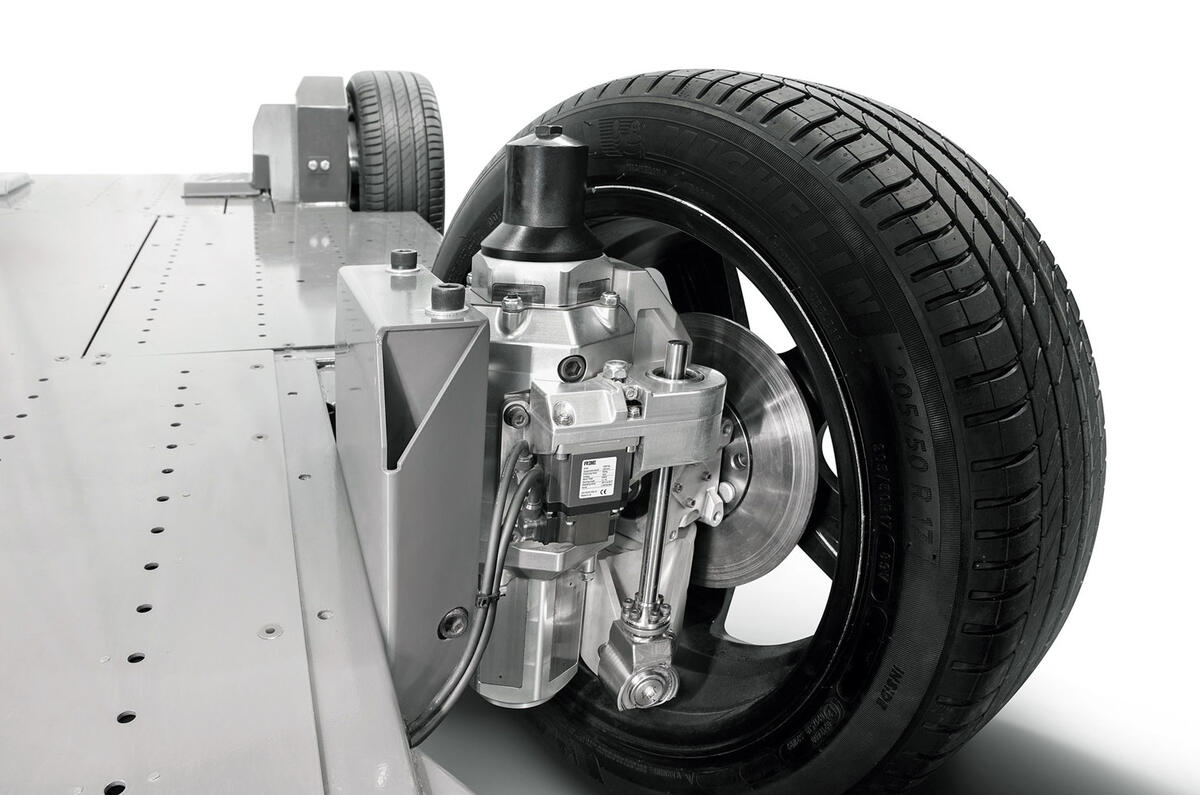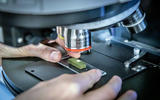Poised on the verge of a new era though we might be, some aspects of vehicle design and engineering are still stuck in the dark ages. The future will be all about electric powertrains – that’s a given – but cars still rely on hydraulic systems for braking, a steering rack mounted across the chassis and hydraulic brake calipers at each corner. Driveshafts run from a transmission to drive wheels and four-wheel-drive cars need an additional transmission system to distribute torque to all four wheels.
Manufacturers have toyed with the idea of ‘dry corners’ for decades and the PSA Group was in collaboration with supplier Delphi two decades ago to develop an electromechanical brake caliper free of hydraulics. The advantage of Delphi’s EMB concept was that assembly and servicing would be much cleaner with the absence of one of automotive’s nastiest substances, hydraulic brake fluid.
With no liquid fuel or exhaust systems to worry about in an EV, the opportunity is there to move everything needed to make a car go, steer and stop to its corners, freeing up all the space between the wheels for passengers and luggage or cargo. Tel Aviv firm REE Automotive, which recently announced plans to open a centre of excellence at the MIRA Technology Park near Nuneaton, is well on the way with its Reeboard and Reecorner chassis technology. REE’s speciality is a modular skateboard chassis that can be used for everything from cars to light trucks. Reecorner packages steering, braking, suspension, electric drive motor-generator and controller inside each wheel arch. The battery system is located inside the flat skateboard, with nothing to clutter the space between the wheels as the powertrain does with a conventional EV.
Each corner is made from lightweight castings and it bolts onto a pillar at each corner of the chassis. The unit incorporates a small, high-rev, low-torque motor with its own integrated inverter and a small, multi-speed and multi-ratio drivetrain. The steering is independent of other corners and allows 45deg of steering angle either way. The system also incorporates its own electronic control unit coupled to the main vehicle ECU and AI sensing to provide preventative maintenance, as well as single-wheel brake-by-wire with adaptive regeneration. An ingenious suspension linkage is concealed entirely inside the wheel rim and electrical power is delivered via cables from the chassis.
The platform can be used for both human and autonomous drivers and the energy source can be either batteries or hydrogen fuel cells. REE’s platform harks back to GM’s brilliant autonomy concept of 2002, based on a spacious skateboard chassis, powered by a hydrogen fuel cell system and driven by electric wheel motors. REE is a technology provider rather than a car maker and it’s partnered with a large network of global tier one suppliers to manufacture the technology for use in pretty much any kind of vehicle from EVs and autonomous EVs up to medium-sized trucks.








Join the debate
Add your comment
The REE unit incorporates "an ingenious suspension linkage concealed entirely inside the wheel rim". Is it the best solution? I believe it contributes to increase of unsprung weight. Can someone elaborate this issue?
Inspirational stuff, a Nirvana for the Motor industry, I certainly hope so,because at the moment we can't use our cars 90% of the time, which means the battery in your car needs checked so it doesn't go flat, and above all, we need a clean healthier future for the coming generations.
Eh?
BDS
As far as I gathered from the information above, The REE unit is not a British Designed Suspension.